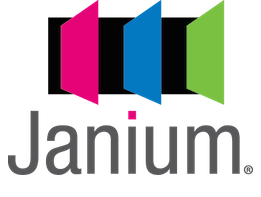Librarian Modules
Public Catalogue (OPAC)
Supports searches of materials in the local database or in other catalogues via Z39.50 or HTTP.
Allows the use of Boolean operators and wildcards to the right, to the left, or both at the same time.
Is provided with limitation tools like: language, date of publication, publication place, etc.
Search through one, several, or all of the libraries in the system at the same time.
It offers different types of search:
- Fast: by word, author, title, subject, publisher, series, classification, ISBS, ISSN.
- Advanced: by word, author, title, subject, publishing and list selection.
- Numerical: by barcode, acquisition number, number of tab and item, control number, classification, ISBS and ISSN.
- Other: for Z39.50, http, web search and XML services.

Digital objects
The System Librarian can enrich bibliographic records and copies through the linking of electronic archives with the digital objects function. This function allows you to link electronic files (text, video, still image, sound, etc.). It provides more information than that written in the bibliographic records and copies. These electronic files will be presented to users in the public catalogue (OPAC).
Unlike the Janium system it DOES NOT INCLUDE THE FULL-TEXT INDEX.
Tags
The term Tags has been used in the Web 2.0 philosophy and Semantic Web to describe and contextualise the information, allowing a user or group of users to sort, classify and share information (records, content, resources, etc.) using one or more keywords. The system allows you to create two types of tags:
- Private Tags , are those which the user applies to the bibliographic records for their personal use. No other user will be able to see them through the public catalogue.
- Public Tags, are those that can be viewed by all users of the system, but can only be created by users with permission of the library.
The Tags function allows the user to mark the bibliographic records of interest with a code that allows them to locate them immediately. It works by having direct access to bibliographic records that the user marked as interesting by its subject matter. The Tags are deployed in alert services in the public catalogue.
User Services
- Reserve materials that are presently being lent.
- Send requests to the library.
- Change passwords.
- Renew materials on internet.
- Review account status.
Access to other catalogues
Searches on other sites: for Z39.50 and http.
Alert services
- Bulletin of new acquisitions.
- Special Collections.
- Selection Lists.
- Tags.
Social Network links
Twitter, Facebook, etc.
Bibliographic control

- Simultaneously supports multiple formats for the creation of searches including: MARC21 Bibliographic, Dublin Core and personalized formats.
- Facilitates catalogue copying online via Z39.50.
- Allows the importation of records and files through MARC21, ISO 2709, XML, ASCII.
- Prints spine labels, pocket labels and bar codes as a group or individually for a specific book.
- Detection of duplicates by comparing the fields of bibliographical records defined by the library for each type of document.
- Multi-language spell checker.
- Relies on specific capture formats for each type of material
- The editor provides contextual help and prevents improper use of the MARC format to control the repeatability of tags and subfields in each tag
Circulation
The circulation module makes it possible to define different and independent circulation policies for each library. Irrespective of the complexity of the circulation policies, the Librarian system is designed to be able to adapt to the any institution’s way of working. Through this module the following can be performed:
- Loans, returns, and renewal of materials.
- Printing loan and return tickets.
- User registration.
- Management of sanctions and fines.
- Sending notifications via email, print, or via mobile phone (SMS) etc.
- Generation of no debt reports.
Inventory
Through a very simple operator procedure, from the Management Modules, Bibliographic Control and Circulation, it is possible to perform a physical inventory of existing collections in each of the libraries without suspending the circulation service.
- Allows the use of portable terminals.
- Generates all reports automatically and easily.

Reports and statistics

- Generates lists and statistics of: records, catalogues, authorities, users, use of the material, etc. based on specific filters, according to the particular needs of the institution
- Export information from the reports to spreadsheets or text files to use them in other applications.
- Designed to be used by the end user without the intervention of technical support. All the fields in the system are recoverable through reports.
What is Librarian?
It is a system designed to meet a library’s basic need. It has been created to be a powerful solution, easy to use and maintain, that conforms to international standards and is economically affordable.
